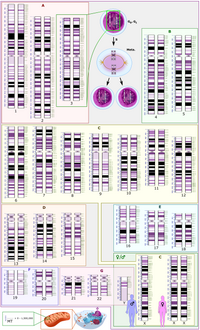
Photo from wikipedia
Type 2 diabetes (T2D) risk is highly heritable, and although many associated loci have been identified, analyses of regulatory regions in most whole-genome sequencing (WGS) studies have not been specific… Click to show full abstract
Type 2 diabetes (T2D) risk is highly heritable, and although many associated loci have been identified, analyses of regulatory regions in most whole-genome sequencing (WGS) studies have not been specific to relevant tissues. The availability of tissue-specific expression quantitative trait (eQTL) information can further elucidate the functional role of non-coding regulatory variants. A WGS (>38x sequencing depth) association study was performed for variants in 9,663 cases and 35,050 controls from the NHLBI’s Trans-Omics for Precision Medicine (TOPMed) program. eQTL data from 48 different tissues was obtained from the Genotype-Tissue Expression (GTEx) Portal. To generate loci of interest, 200-kb windows were considered upstream and downstream of each variant found to be genome-wide significant (p Disclosure M.D. Szeto: None. H.M. Highland: None. A. Manning: None. Funding National Institute of Diabetes and Digestive and Kidney Diseases (U01DK078616, K01DK107836)
Journal Title: Diabetes
Year Published: 2019
Link to full text (if available)
Share on Social Media: Sign Up to like & get
recommendations!